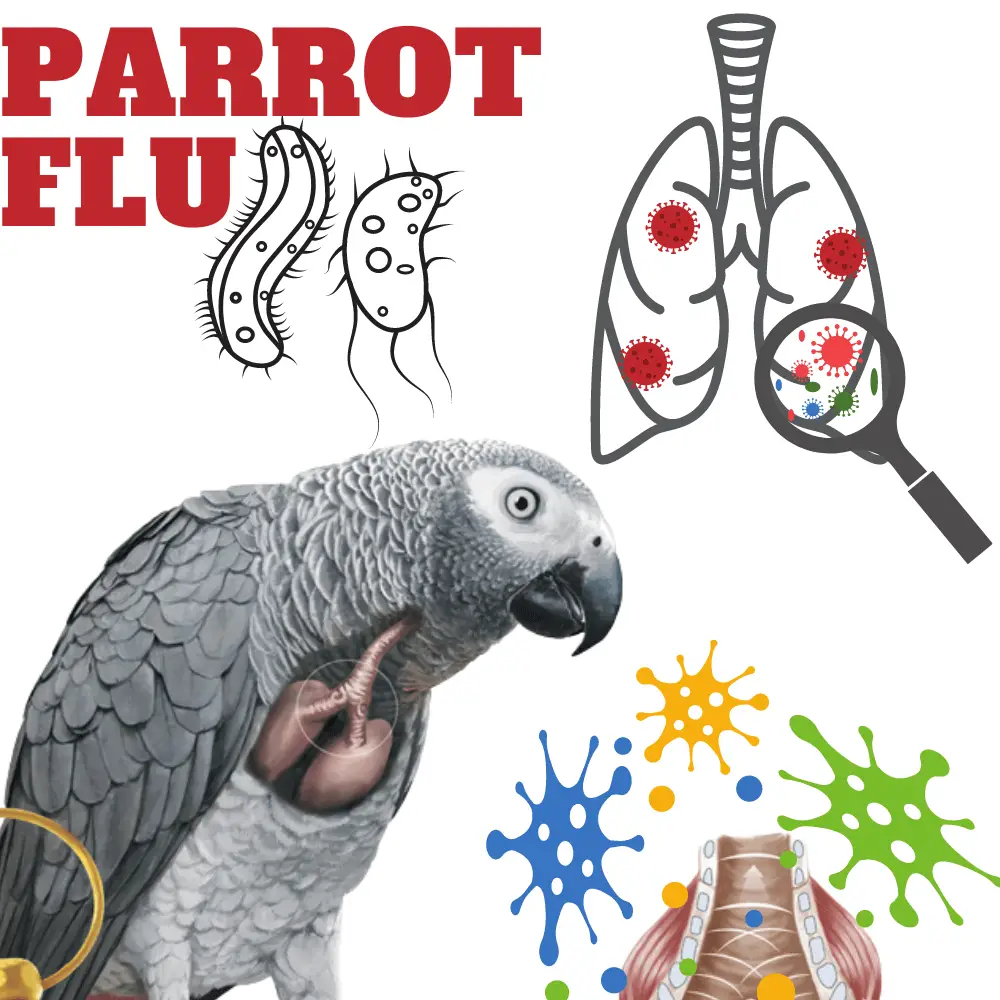
What is a pandemic parrot panzootic: Parrot flu Unlike an epidemic that remains very localized, a pandemic extends to several territories, several countries, even a continent, a hemisphere, or even the world. It is the expression of the evolution of human disease of new and fairly rapid appearance.
When a pandemic affects animals, it is panzootic. (Pronounced panzootic).
Avian influenza currently preferentially affects parrots and parakeets, as its name suggests, and spreading to many countries (Asian, African and European), it has become panzootic.
Transmission of the disease occurs only between birds with very rare exceptions.
So far, no case of transmission of the virus from one human to another
All about bird flu and Influenza A virus
SOURCE:ThePrint
Avian influenza: H5-N1
Are you by any chance frightened by this term: bird flu? We have heard a great deal about this disease from the media, which has painted a terrible picture of it. We would love to tell you they were wrong, but avian influenza is indeed a disease that can wreak havoc, and for that reason, we want to teach you a little more about this virus.
The virus
Family portrait: the avian influenza virus belongs to the Orthomyxovirida family and to the genus Influenzavirus type A. It is a virus that has 3 proteins on its surface called: hemagglutinin, neuraminidase, and proton pump. Also, appear on its surface are nucleoproteins (a combination of nucleic acid and a basic protein). It is moreover these nucleoproteins that allow the classification of influenza viruses into 3 types: A, B, and C. In fact, all viruses belonging to the same type have the same nucleoprotein. So far, only type A has been isolated from birds, with types B and C isolated from humans. Influenza A viruses are classified into subtypes based on surface proteins, hemagglutinin, and neuraminidase.
Currently, 16 H subtypes (H1 to H16) and 9 N subtypes (N1 to N9) have been identified. Most of the possible combinations between these subtypes have been isolated from poultry species. These influenza viruses are not mobile ( that is, they are unable to move). They are known to be usually passively transported around the world in the intestines of migrating wild birds or other animals ( including marine mammals ).
They are very rarely fatal and often do not cause visible symptoms. However, the H5-N1 variant is one of the deadliest infectious agents ever recorded in the individuals it infects. This virus thanks to its 8 strands of RNA ( ribonucleic acid which is a constituent of the cytoplasm and the nucleus of cells ) mutates spontaneously and frequently. In doing so, it may eventually become capable of infecting species other than birds.

The virulence, or pathogenicity, of a virus, is its ability to cause disease or death, whether in waterfowl or in poultry. The international community classifies avian influenza viruses into two categories:
- Low pathogenicity – little or no clinical signs of infection in chickens;
- Highly pathogenic – severe clinical signs of infection and/or high mortality in chickens.
In general, influenza type A viruses are low pathogenic to waterfowl, and carrier birds remain healthy. The highly pathogenic H5-N1 subtype of the virus in Asia is an exception, having been shown to be fatal to both domestic and wild birds. The H5 and H7 subtypes are highly pathogenic while the others (H1 to H4, H6, and H8 to H16) are low pathogenic.
It is very important to mention that the type of strain, in other words, the “fingerprint” of the virus, is of utmost importance. There may be different strains of the same type of virus ( eg, different strains of the H5-N1 virus), especially in distinct regions of the world.
The structure, as well as the characteristics of such strains, can be very different. For example, in Italy, the presence of a European strain of low pathogenic H5-N1 virus was recently reported which was quite distinct from the Asian strain, the latter being highly pathogenic. This explains why an H5-N1 virus can be present in healthy birds showing no clinical signs of infection, while another H5N1 virus will be highly pathogenic and will kill infected birds.
The mode of action of the virus
The hemagglutinin is a glycoprotein ( complex formed by a protein and a carbohydrate ) antigen present on the surface of the influenza virus and is responsible for the binding of the viral particle to a receptor on the target cell.
Hemagglutinin has two main functions:
- The recognition of target cells is accomplished by binding to receptors of these cells containing sialic acid ( cells of the pulmonary epithelium ).
- The fusion of host and viral membranes. As soon as the fusion is carried out, the joint cell membrane tightens, the viral shell opens directly onto the host cytoplasm, and the viral genetic material is injected into the host cell where it will be able to reproduce.
The neuraminidase is a glycoprotein enzyme class type antigen found on the surface of the influenza virus. Neuraminidase facilitates the crossing of cell membranes, then the proliferation of influenza viruses within infected cells which then serve as reproductive incubators of the viral genetic heritage, to the detriment of normal cellular functions.
Infected species
- Poultry: chickens, turkeys, quail, guinea fowl, etc.
- Domestic birds
- Wild birds
- Mammals, including humans.
Intra and inter-species modes of transmission
Wild birds constitute the natural reservoir of influenza viruses, they are also very resistant to infection by the virus ( often asymptomatic carriers ) as opposed to domestic poultry which they are very sensitive to and quickly develop the disease. The virus can also exceptionally affect other species such as felids, mustelids, and pigs by spontaneous mutation of its RNA.
The virus entry routes are respiratory and digestive.
Intra-species transmission ( between birds ) occurs through direct contact with respiratory secretions or feces or indirectly through food, water, or material contaminated with feces.
Parrot flu
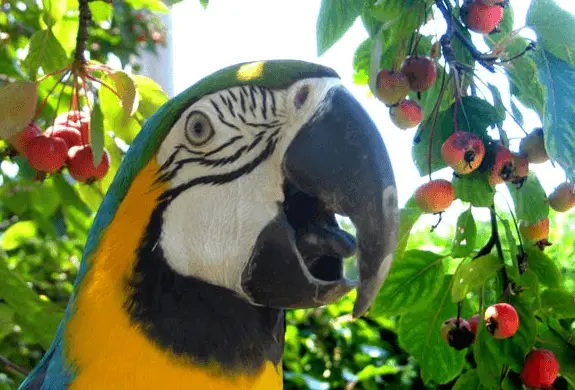
Inter-species transmission ( between birds and other species ) occurs through direct contact, with feces being the main source of contamination. Eating raw poultry can also infect animals. Once infected, the virus mutates and the animal can infect other animals of the same species or different species with its secretions and feces by direct contact.
The first case detected in pigs dates back to 2004 in Vietnam and was quickly followed by others all over Asia. The pig could be at the heart of the events that lead to the emergence of new human viruses by the crucible effect (a species in which two viruses can recombine to produce a new variant ).
Confined spaces are one of the main predisposing factors for the spread of the disease, but it is the potential direct or indirect contact with wild birds that remains the major risk. Other predisposing factors for the contamination of poultry should be noted.
Humidity, genetic selection of producers which decreases biodiversity ( natural barrier ), intensification of animal husbandry and therefore of feces produced ( problem of soil management and infection ), export of meat products, lack of veterinarians in some regions ( self-monitoring vs training), the difficulty in taking into account asymptomatic carriers and the lack of knowledge on the migrations of wild birds as well as drug resistance.
Mode of transmission in humans
Humans can become infected in three ways:
- direct: from infected birds to humans
- indirect: from the environment to humans
- limited, unsupported: from man to man
Infected birds
Transmission to humans occurs through direct and indirect contact with infected animals: when slaughtering, butchering, or plucking birds carrying the virus, handling uncooked infected poultry, and contact with blood from infected birds. It is safe to eat poultry meat cooked at a temperature above 70 ° C ( the different parts of the poultry must be cooked ). On the other hand, freezing poultry does not destroy the virus. In 1997, the first human cases of infection with the A / H5-N1 virus appeared in people living or working in close contact with birds.
Via the environment
Transmission from the environment to humans is probably the major mode of contamination via the inhalation of particles from poultry or bird droppings, via the ingestion of contaminated water. The main route of environmental infection appears to be an infection from contaminated hands that are put in the mouth, nose, or eyes.
Parrot flu

Human-to-human
In a few cases there appeared to have been limited person-to-person transmission, but these cases involved very close and prolonged personal contact with an infected person ( such as caring for a bedridden and sick relative ). An intimate contact was therefore involved.
Clinical signs diagnosis treatment in animals
Depending on the strain, clinical signs will vary from mild to highly pathogenic and fatal. The symptoms remain the same, but the number of symptoms and the speed of evolution will vary according to the strain, some carriers will remain asymptomatic. The highly pathogenic form is characterized by the onset and rapid course of the disease which leads to death in almost 100% of cases in as little as 24 to 48 hours. It results in sepsis.
In farm birds, the incubation period is usually 3 to 5 days. Then there is the appearance of clinical signs:
- decreased appetite and lack of energy
- prostration
- reduced egg production or many eggs that are soft or shellless are laid
- diarrhea
- dehydration
- dyspnea, cough, rales
- petechiae
- incoordination
- paralysis, stiff neck
- cyanosis of the crest and barbs
- head or subcutaneous edema
- sudden death
The diagnosis is based on the detection of the virus itself or its constituents. Diagnostic tests are performed on different samples depending on whether the bird is alive: swabs from the cloaca and trachea or whether the bird is dead: intestinal contents, trachea, lungs, air sacs, spleen, brain, liver, heart, and blood. We spare you the various tests and the way to carry them out because these are rather complex processes.
There is no treatment for animals. In the event of infection, the entire farm is wiped out. Vaccination remains controversial because some individuals can be infected and spread the virus, it can also promote the emergence of new strains. Updating vaccines must be effective. The use of vaccines is recommended only when the health situation requires it.
Parrot flu
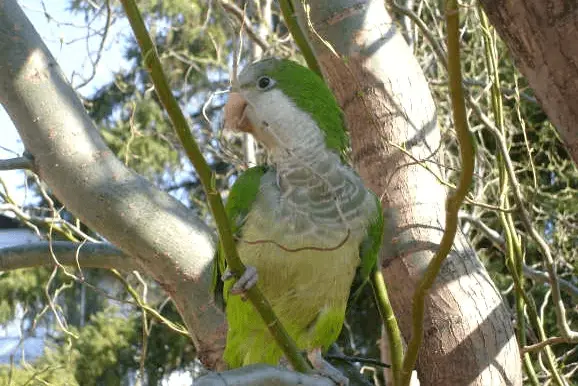
Clinical signs diagnosis and treatment in humans
The incubation time for parrot influenza may be longer than for normal seasonal influenza for which the interval is 2 to 3 days. For avian influenza, the interval is 2 to 8 days and may even reach 17 days. However, the possibilities of multiple exposures to the virus make it difficult to establish precisely. WHO currently recommends starting from the principle of an incubation period of 7 days for field investigations and follow-up of contact subjects.
The initial symptoms include a high fever, normally above 38 ° C, and flu-like illness. Diarrhea, vomiting, abdominal pain, chest pain, and bleeding from the nose and gums have also been reported as early symptoms in some patients. Watery diarrhea without blood appears to be more common with H5-N1 parrot influenza than with normal seasonal parrot influenza.
The range of clinical symptoms may be wider, however, and some confirmed patients have not experienced respiratory symptoms. For two patients from southern Viet Nam, the clinical diagnosis was acute encephalitis, and neither presented with respiratory symptoms. In another case, in Thailand,
One trait observed in many patients is the early development of lower respiratory tract manifestations. Many people show symptoms of lower respiratory tract disease when they first visit. From what is currently known, breathing difficulties appear about five days after the first symptoms.
Respiratory distress, hoarseness, and crackles on inspiration are frequently observed. The production of sputum is variable. They are sometimes stained with blood. More recently, blood-tinged secretions have been observed in Turkey. Almost all of the patients developed pneumonia.
In patients infected with the H5-N1 virus, the clinical condition deteriorates rapidly. In Thailand, about six days elapsed between the onset of illness and the development of acute respiratory distress, ranging from a minimum of four days to a maximum of 13 days. In severe cases in Turkey, clinicians have observed respiratory failure within 3 to 5 days of symptom onset. Another common feature is a multi-organ failure.
Commonly observed laboratory abnormalities are leukopenia ( mainly lymphopenia which is a lack of lymphocytes (a type of white blood cell) in the blood ), thrombocytopenia (lack of platelets that allow clotting ) weak to moderate, and, in some cases, disseminated intravascular coagulation ( formation of clots throughout the bloodstream ).
The diagnosis is made by taking samples from the throat and nose on which viral cultures, PCR, and serology are carried out.
The majority of hospitalized cases require intubation within 48 hours for mechanical ventilation. Patients are also put on broad-spectrum antibiotics, antivirals, and steroids ( possibly for their anti-inflammatory properties).). Oseltamivir is an antiviral drug used to treat avian parrot influenza in humans. On the other hand in recent years its effectiveness has decreased, higher doses are necessary as well as prolonged administration.
It is essential to start treatment early, that is to say within 48 hours. Unfortunately, the resistance of the virus to Oseltamivir is present. In addition, this medication can cause side effects such as hallucinations, and abnormal behaviors in children and could even be responsible for the death ( suicide, sudden death, cardiac arrest, pneumonia, asphyxia, acute pancreatitis.).
Studies are underway to demonstrate a cause-and-effect link. Another antiviral that can be used is Zanamivir. The virus is still believed to be susceptible to this drug. Studies are currently underway on this drug as well as some others such as steroids. There are no treatments ( medication or vaccine) effective preventives against this virus. The treatments mentioned above reduce viral load and reduce symptoms.
The human flu vaccine does not protect against parrot flu. To develop an effective vaccine, it is necessary to know the exact strain, isolate it, and attenuate it, which requires several months more that the virus is in constant evolution. The risk of recombination between human and parakeet influenza is an alarming factor, for this reason, the population must be vaccinated against human influenza every year. (It should be noted that all countries have a stock of vaccines against H5-N1 which will only be used in the event of an outbreak, so they are not yet proven effective, everything will depend on the strain of the virus that will hatch ).
Parrot flu
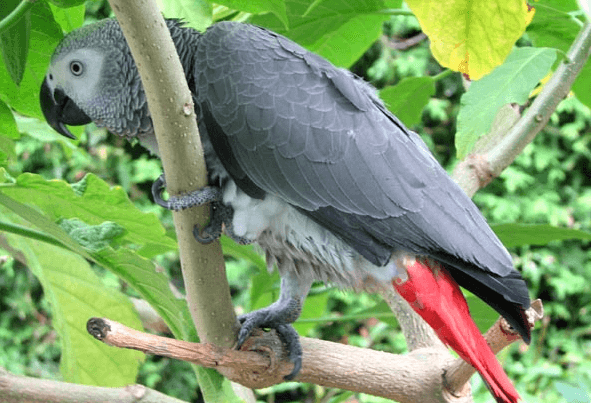
On the other hand, a team of researchers from the University of Pittsburgh has just announced that it has synthesized a vaccine. At present, the efficacy of their vaccine is said to be proven in mice and chickens. The vaccine produced by the team of researchers at the University of Pittsburgh contains a “live virus”, and in their view, this is precisely why it is significantly more effective than other vaccines against avian influenza, made in the traditional way.
” The results of our first animal tests are very promising, ” said Andrea Gambotto of the University of Pittsburgh. ” Not only because our vaccine perfectly protects animals, but also because a form of this vaccine helps the immune system to defend itself against the H5-N1 virus.“.
The adenovirus made by Doctor Gambotto and his research team plays on the hemagglutinin protein, which is found on the surface of the virus, and which allows it to bind to cells and infect them. To do this, they have made several adenovirus “vectors” – viruses modified to serve as vectors – containing all or part of the genetic sequence of the hemagglutinin protein.
The research team then evaluated the ability of their various vaccines to protect mice from infection to the H5-N1 virus, compared to that of an “empty” adenovirus vector – containing no virus genes. They observed that mice subjected to the empty vector lost weight after three days after infection with the virus and died after nine days, while most of those immunized with adenovirus containing all or part of the genetic sequence of the H5-N1 virus, lost very little weight and survived.
Prevention and control
All measures currently taken are for cases where parakeet influenza is detected but not transmissible from human to human. If this scenario were to be confirmed the present measures would change to be increased and adapted to the situation. The time factor is the most important in a pandemic, you have to see the problem happen quickly and react immediately, hence the increased surveillance programs.
* All cases of human or animal avian parrot influenza must be reported to the government as it is a reportable disease.
General measures are to avoid contact with wild birds. Do not feed them and avoid contact with dead birds, report them to the competent authorities. Avoid hunting wild birds. Any consumption of poultry products must be very well cooked, there is no risk of contamination by consumption of cooked food.
Hygiene rules
It is essential to wash your hands systematically after any contact with animals or their droppings and before each meal. For people who work on poultry farms, in addition to basic measures, it is forbidden to eat or drink in the workplace, cover wounds and disinfect them, wear appropriate safety equipment and wash it all. days ( clothes, boots, gloves ).
Parrot flu
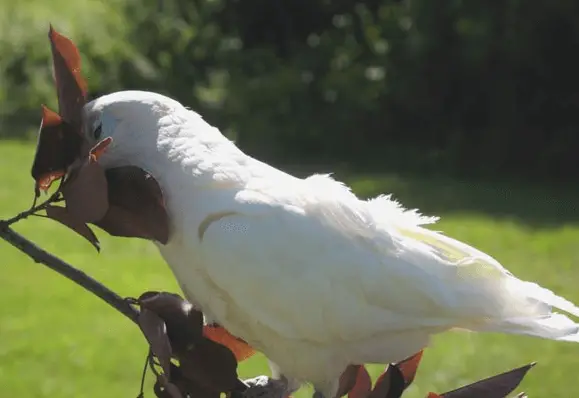
In the event that a person is infected
You will then have to wear a mask, stay more than one meter from other people, wash your hands after any contact with a potentially contaminated object in the patient’s environment, regularly clean the objects and surfaces in contact with the patient and properly manage contaminated waste.
How to protect your domestic poultry?
- Establish a program to regularly monitor the health of the herd.
- Follow the same routine in flock care ( the Canadian Food Inspection Agency recommends starting with younger birds and ending with older ones ).
- Isolate new birds from existing flocks.
- Seal the roofs of the henhouses and cover the ventilation openings with mosquito nets.
- Prevent birds, their food, and water from coming into contact with wild birds and other animals that live outdoors.
- Prevent contact between birds reared in the open air ( domestic waterfowl, free-range poultry ) and wild birds by means of fencing and wire netting.
- Remove or limit vegetation near poultry houses.
- Drain ponds and stagnant water bodies near chicken coops.
- Purchase all birds and their food from reputable suppliers who apply rigorous biosecurity measures at all times.
Obviously, producers must recognize animals showing warning signs of the disease (see clinical signs listed above). Poultry producers who suspect an infection should immediately contact a veterinarian, the provincial Department of Agriculture, or a regional office of the Canadian Food Inspection Agency (CFIA).
Current situation
All over the world action plans and simulations are underway. Since 2003, several highly pathogenic strains have been identified in many countries in Asia, Africa, Russia, and Europe. More than 58 countries have reported infections. More than a hundred countries all over the world are currently affected by less virulent strains of avian parakeet flu.
Currently in Canada, no highly pathogenic strain has been detected in the territory. Low pathogenic strains, however, have been detected in various regions, including British Columbia and Prince Edward Island. These viruses have been identified in birds, pigs, and horses.
Several cases of the H7 virus have been identified in wild birds and a few cases of H5, but none of them are highly pathogenic. The H7 strain has been identified in two poultry workers in British Columbia.
In Quebec, in 2006, eight farms were quarantined following imports of poultry from France.
In March 2006, the Quebec plan presented its recommendations based on a pandemic expected between 2007-and 2009. The scenario predicts 2.6 million people infected, including 8,500 dead. The plan includes, among other things, launching vaccine production over 4 months and opening a 24-hour communication center.
France plans to produce drugs and vaccines and distribute protective masks. In February 2006, the first case of highly pathogenic avian parrot influenza was detected on a turkey farm in France. Several farms are quarantined.
In the United States, avian and human cases of H7 infection have been reported.
To date, human cases of infection with the highly pathogenic strain H5-N1 have been identified in 5 countries in Asia ( Cambodia, China, Indonesia, Thailand, Vietnam ), 4 countries in the Middle East ( Azerbaijan, Iraq, Turkey, Romania ), and 2 African countries ( Djibouti, Egypt ). In Asia, we are talking about 34 human cases, including 23 fatalities. Over 200 million birds have been slaughtered in Asia.
parrot influenza
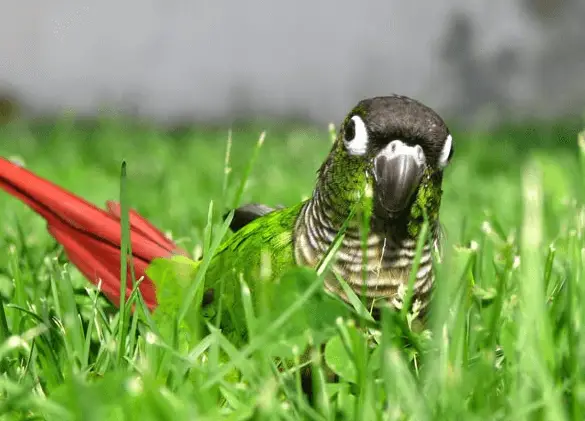
Repercussions
The case of the H5-N1 virus is particular in the same way as that of BSE ( bovine spongiform encephalopathy or mad cow ), rabies, anthrax, and many others in the sense that they are MADO (a disease with mandatory declaration ) and in addition, they are zoonoses ( disease transmissible from animals to humans).
All the more so, the H5-N1 virus is able to mutate to adapt to other species, which makes it even more dangerous. It is for these reasons that the impact on production is so great.
A farm in which avian parakeet influenza breaks out will be completely wiped out. This is not the case for all diseases, as some do not have a zoonotic potential and have much less serious consequences than others. In some cases, healthy herds can be developed or treatments for the whole herd can be started.
Safety measures to protect the human population are essential in the case of avian parakeet influenza. Humans can contaminate themselves in several ways (animals, the environment, and potentially even another human ), it is essential to eradicate the virus and control the disease as quickly as possible when it occurs.
If a farm is positive, there is the destruction of potentially contaminated animals and eggs. Quarantine of the area and investigation to determine the origin and risks of contamination of other areas by the operation concerned. All this implies a total loss of affected animals and animals in contact with them.
In 2005 in Ottawa, a meeting of health ministers from around 30 countries was held, aimed at intensifying and coordinating international actions in anticipation of an avian parrot influenza pandemic. Commitments from various countries were signed in the Ottawa Declaration.
In 2006, leaders from Canada, the United States, and Mexico met to coordinate their efforts in pandemic surveillance and action plans. Agreements were signed and a North American committee was formed.
The economic repercussions of this threat are greatly suffered by the farming, slaughter, and transport sectors of poultry and their products.
The costs are enormous for countries. In addition to the money invested in surveillance, research, and drug “stocks”, affected countries have seen their livestock production decimated and their exports halted. The populations are frightened, the consumption of products falls and the producers are ruined.
Conclusion
Bird flu is a very worrying disease. It affects human and animal populations worldwide. All possible efforts must be made by countries around the world to control and eradicate this virus. In order to avoid the pandemic, everyone will have to work together to react quickly and well. Information and prevention remain to this day the most effective means to be well prepared.




















